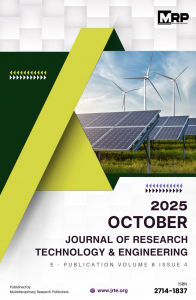Downloads
River sand mining in Sri Lanka has caused severe environmental degradation, necessitating sustainable alternatives for concrete production. This study evaluated four sand types—river, sea, dune, and estuary sands—through standardized testing of physical properties, chemical composition, and concrete performance. Representative samples underwent sieve analysis, chloride content determination via Volhard’s method, and mechanical testing for compressive and tensile strengths at 7 and 28 days. River and dune sands achieved compressive strengths above 30 MPa with low chloride content (<500 mg/kg), meeting international standards for structural concrete. Sea sand exceeded chloride limits by 259% (1,796 mg/kg) but showed potential after treatment. Estuary sand produced marginal strength (29.3 MPa) with borderline chloride levels. Failure analysis revealed sound structural behavior in river and dune sand concrete, while sea and estuary sands showed brittle failure modes. These findings demonstrate that processed dune sand and treated sea sand can replace river sand in concrete applications, supporting environmental sustainability while maintaining construction quality. Implementation requires regulatory enforcement of chloride limits and investment in sand treatment technologies.
Written by JRTE
ISSN
2714-1837
| M | T | W | T | F | S | S |
|---|---|---|---|---|---|---|
| 1 | 2 | 3 | 4 | 5 | ||
| 6 | 7 | 8 | 9 | 10 | 11 | 12 |
| 13 | 14 | 15 | 16 | 17 | 18 | 19 |
| 20 | 21 | 22 | 23 | 24 | 25 | 26 |
| 27 | 28 | 29 | 30 | 31 | ||
Our Visitors






 Users Today : 60
Users Today : 60 Total Users : 42016
Total Users : 42016 Views Today : 80
Views Today : 80 Total views : 104271
Total views : 104271 Who's Online : 1
Who's Online : 1 Your IP Address : 216.73.216.134
Your IP Address : 216.73.216.134

